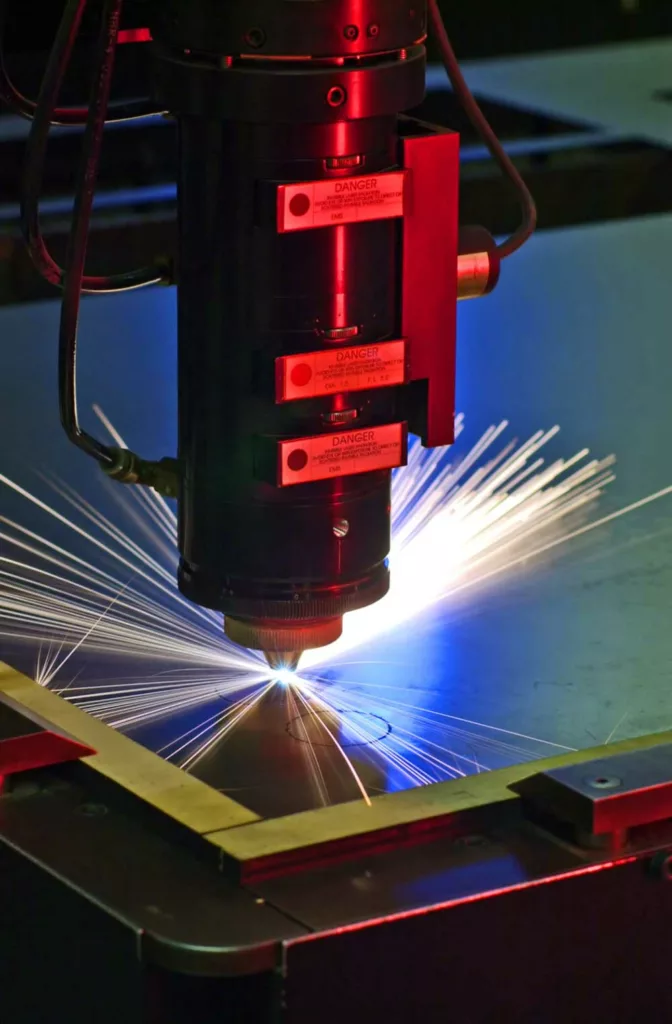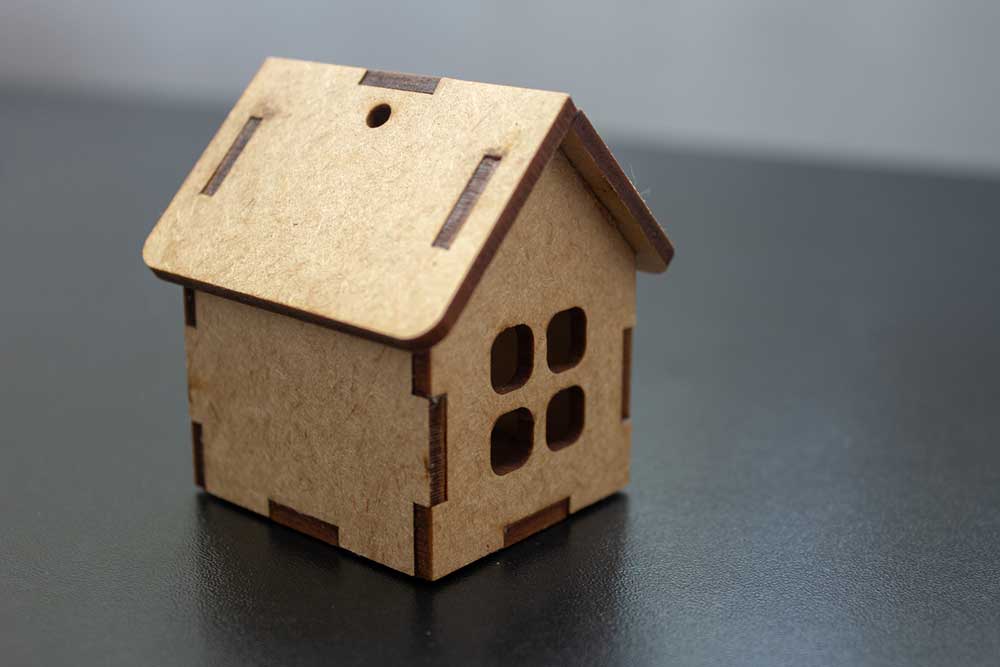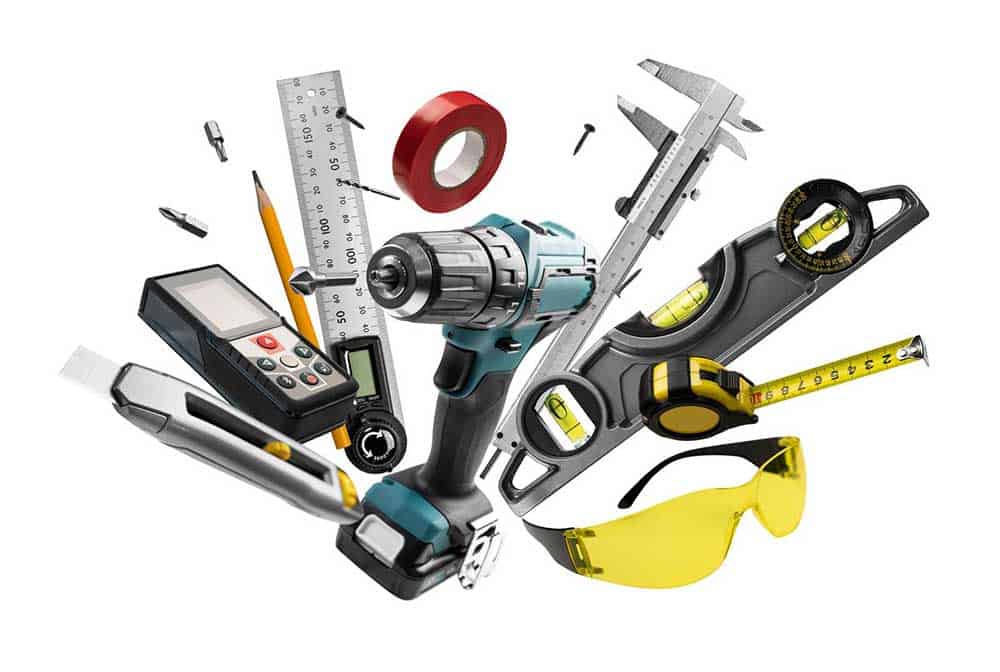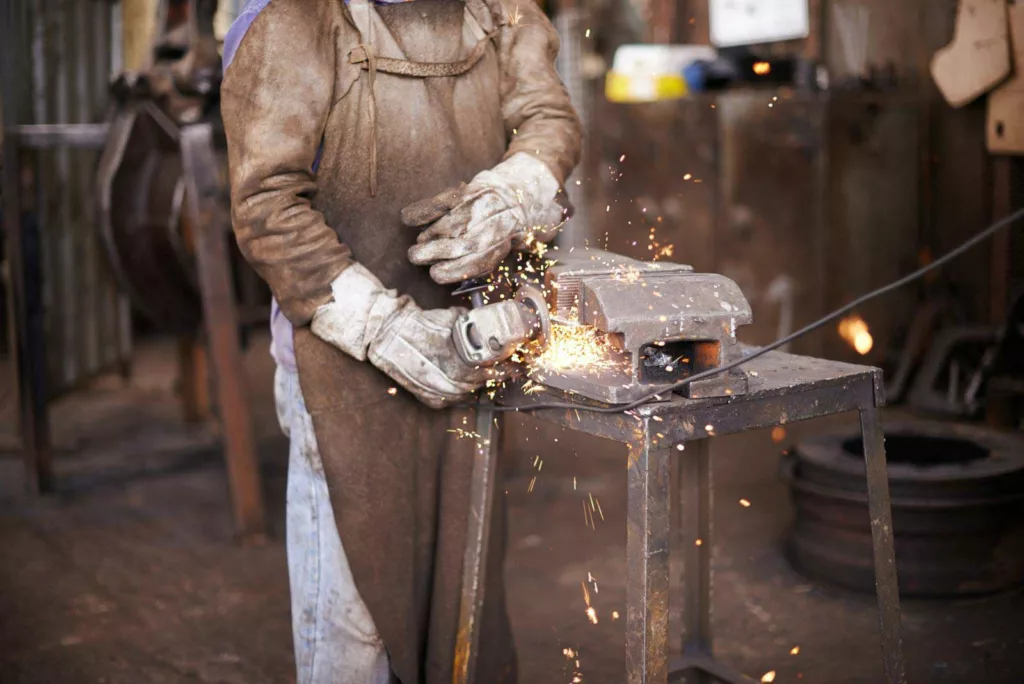If you’re wondering what class laser for wood cutting is ideal, you’re not alone on this quest.
For a start, the right tools and skills enhance wood cutting. Tools like laser cutters can help you to achieve greater productivity.
Lasers can help achieve various innovations, from simple boxes to complex engravings in wood and constructing more complex three-dimensional objects, and much more.
This guide will highlight everything from the basics of how laser cutters work to the suitable material for your work. Read on as we delve into the world of laser cutters for wood carving.
What is a Laser Cutter?
A laser cutter is a machine that cuts, marks or engraves materials. It usually works by emitting a beam to burn or melt the material. Laser cutting enables the processing of diverse materials with precision.
The capability to cut specific materials depends on the type of laser and machine power at your disposal.

Industrial laser cutter with sparks flying
What Can You Do With a Laser Cutter?

Small house made of wood on laser cut used for decoration stock image.
Nothing beats an excellently hand-crafted wall clock to spice up your home.
A Laser cutter is a must-have piece of equipment to demonstrate your DIY skills while expressing your personality and taste.
Whether your design choice is a simple round or square shape, getting a laser cutter will help you spring your wishes to life.
Not only is the laser cutter used for cutting wood, but you can also use it to mark and engrave metals, leather, and even cardboard.
There is no need to worry about consistency, as the laser cutter can produce the perfect cut on your wood.
Also, it is affordable and easy to maintain compared to the diode laser, which functions similarly to the laser cutter.
While the diode laser is mostly used for engraving thin materials like papers, fabrics, or cardboard, the laser cutter never disappoints! The laser cutter can handle all your hard material perfectly well.
Safety Classes

Danger vector flat icon
Most manufacturing industries usually package equipment with safety risks. Even though some machines are not as gigantic as bulldozers, they all share one similar feature – danger potential.
While most machinery safety manuals are prominent and easily visible, laser cutters differ. Hence, one has to fully understand the safety classification to avoid accidents.
To understand the laser safety classes, you must first know what it is. The laser safety class is the labeled level of a laser safety hazard for identification. It is divided into four safety classifications. They include:
- Class 1: The first class is the safest level of the laser cutting machine. It can operate in any environment as long as it is suitable and doesn’t emit harmful radiation. Reaching the class 1 requirement is easy. The laser hazard comes in a light-tight enclosure with the access panels joined and screwed securely.
Warning: An opened access panel indicates the system is in class 4. This means it has a higher chance of blowing up! To prevent this from happening, it is better to turn off the machine.
- Class 2: Unlike Class 1, when something goes wrong, a guiding laser at <1mW is visible to warn the user of its danger.
- Class 3: This class does not apply to the laser cutting machine but indicates other types of equipment with markings at 5mW.
- Class 4: Describing Class 4 as the danger zone is only an understatement. It has a higher potential of exposing you to radiation while putting sensitive materials at a greater risk of combustion or explosion.
It is advisable not to operate the class 4 machines if you’re not a pro. The machine should also be taken away from residential areas as well.
How To Use a Laser Cutting Material
You have just decided to get your hands busy with your design, but unfortunately, you’re still stuck on understanding the makeup of the machine.
Knowing how to use the laser cutter is the first step to showing off your creative skills, but it is essential to understand that the CO2 laser works differently.
Unlike the other laser types, the CO2 infrared part of the light spectrum is invisible to the human eyes. Below is a step-by- process on how to laser cut a plank of wood.

Construction tools levitate on a white background
Preparation
The first step to learning how to use the laser cutter is to ensure that the wood can fit inside the laser work area of the machine.
You may not need extra tools, but who knows if your utility knife and masking tape will be handy?
Setting

Bouncing frequency wave stock image
There are four key settings to note when using your laser cutter. They include:
- Power: The laser power levels can be adjusted based on the material. To cut through thick materials, you would need high power, while most thin materials are engraved with lower power.
- Speed: Like the power setting, you can also determine the cutting speed in the laser head. When you need to cut thin materials, increase the speed to its maximum.
- Frequency: Frequency measures the number of laser pulses per second. If that came off as a high school physics quiz, then here’s an example: when you are aiming to achieve a smooth wooden edge, use a frequency of about 500 – 100 Hz.
- Focus: You can fix this by adjusting the focus setting on the laser head. It is also important to position the focus point directly to the material’s surface or slightly below.
Now that was easy. You might ask, ‘How can I retain a perfect setting?’
Simple! Using the laser manual as your starting point is the easiest way to achieve that.
When you’ve put all the necessary settings in place and are fully satisfied with the outcome, you’re finally ready to make your first cuts.
What Materials Can Be Cut or Engraved With a Laser?

A man grinding metal in a workshop
Laser cutters are known for their ability to perform various tasks ranging from cutting wood to engraving leathers, cardboard, and even metallic materials.
As economics would say, “Demand increases as supply hikes up.” It goes with a stronger sense of knowledge that as technology advances, lasers will upgrade over time to cut even more complex materials.
With the laser cutter, you can be sure of honing your creativity skill while checking off your DIY dream list!
Conclusion
Learning everything there is to know about laser cutters can offer you the possibility of creating varieties of items.
From sharing your personality and taste of your wooden wall clock to spicing up your home with various things, your dream of monetizing your craft could come true.
But you must understand the safety precautions when using the laser cutter to prevent accidents. As the saying goes, a stitch in time always saves nine!
